|

Click on the poster to view larger
Title: Coming Together to Promote Racial Understanding: Findings undergird need for race dialogue in Extension.
Presenters: Brian Raison, Ohio State Univ. Extension; Eric Walcott, Michigan State Univ. Extension; Rachel Welborn, Southern Rural Development Center; et al.
Abstract: Why does race dialogue matter in today’s Cooperative Extension Service? In this poster, we share findings from participants (representing 26 states) who joined a national training initiative aimed at improving race dialogues and relations at the local levels through Extension.
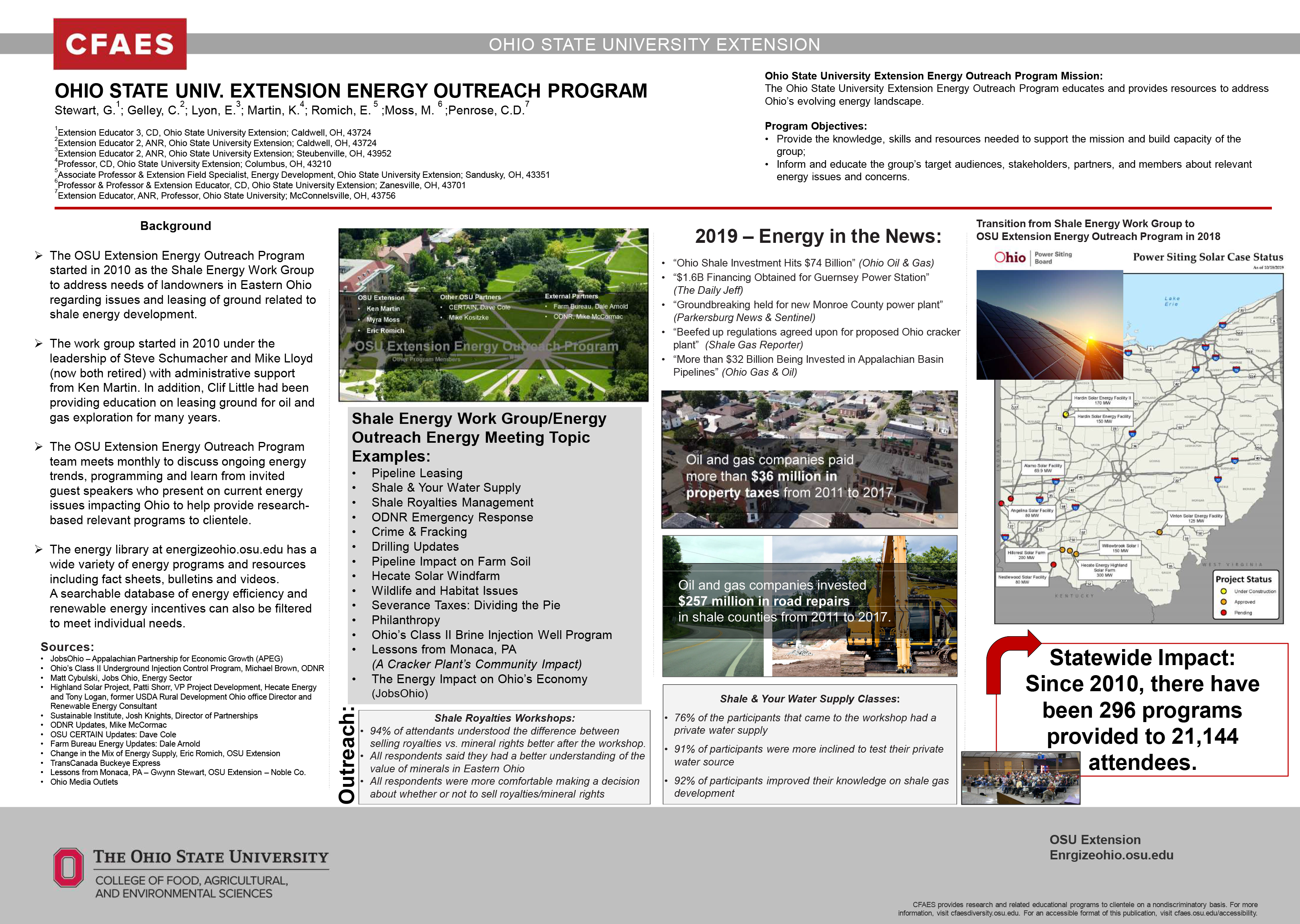
Click on the poster to view larger
Presentation Title: OHIO STATE UNIV. EXTENSION ENERGY OUTREACH
The Ohio State University Extension Energy Program educates and provides resources to address Ohio’s evolving energy landscape. It provides trend and research updates and an energy library available on EnergizeOhio.com with a variety of energy programs and resources.

Click on the poster to view larger
Presentation Title: Community and Economic Development Impacts of Rural Public Transportation in Ohio
Rural communities depend on transportation to access jobs, schools, medical services, shopping and recreation. Rural public transportation is challenging because of travel distances and fewer transit options. This poster shows the role of rural public transportation. It presents rural public transportation program goals, funding sources, types and potential community impacts.

Click on the poster to view Larger
Title: WIC Perks: Expanding Nutrition Incentives Beyond SNAP
Presenters: Amanda Osborne
Abstract: In 2019, Ohio State University Extension (OSUE) Cuyahoga County partnered with Cuyahoga County Women, Infants, and Children (WIC) and four local farmers' markets to launch the WIC Perks nutrition incentive program. Through the cross-program pilot, OSUE provided nutrition education and $13,640 worth of fruit and vegetable coupons to 683 families.
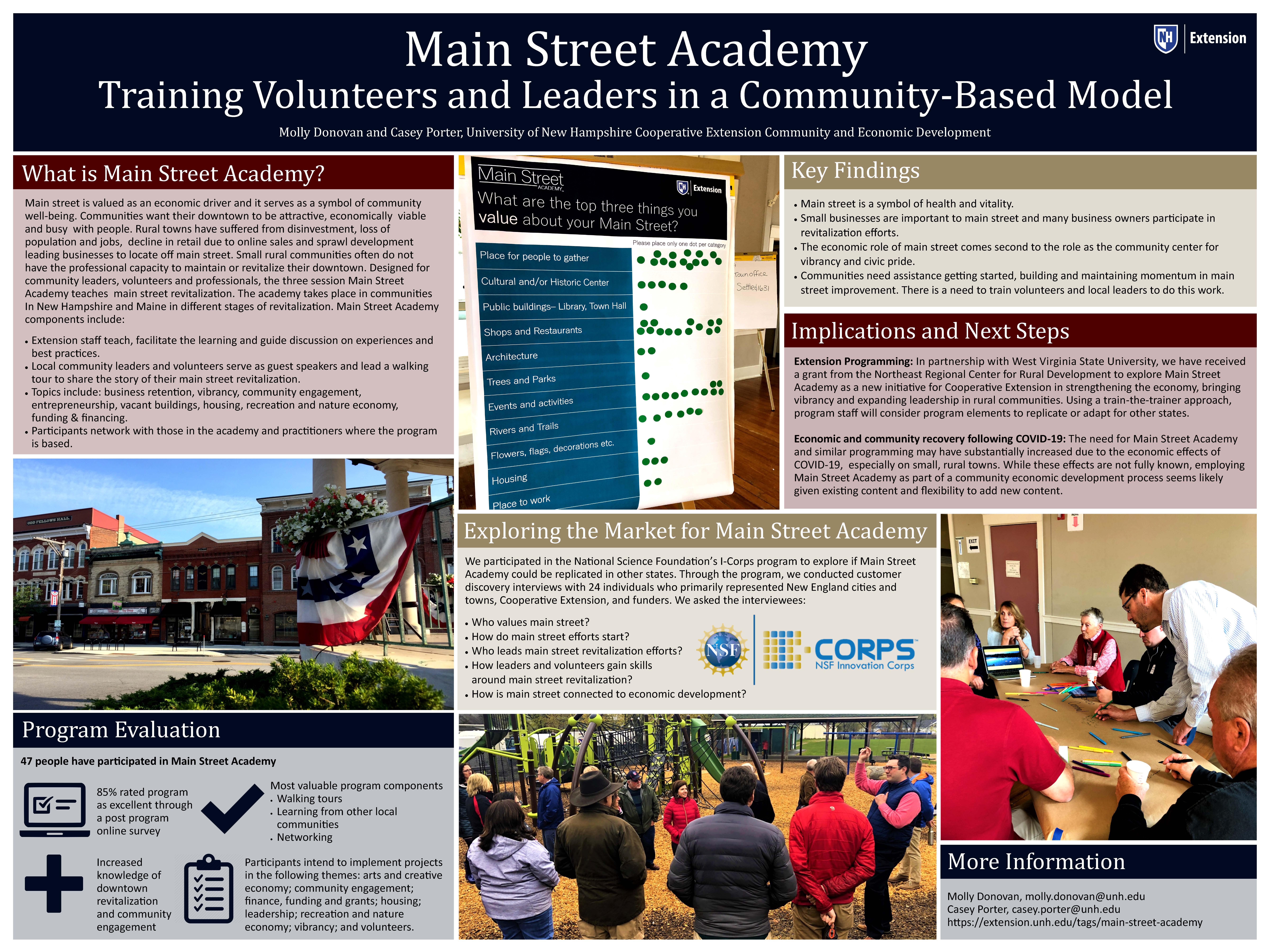
Click on the poster to view larger
Title: Main Street Academy: Training Volunteers and Leaders in a Community-Based Model.
Presenters: Casey Porter, Molly Donovan
Abstract: Communities want their downtown to be attractive, economically viable and busy with people. Small, rural communities often do not have the professional capacity to maintain or revitalize their downtown. This poster highlights Main Street Academy, a community-based training designed to teach main street revitalization to community volunteers and leaders.
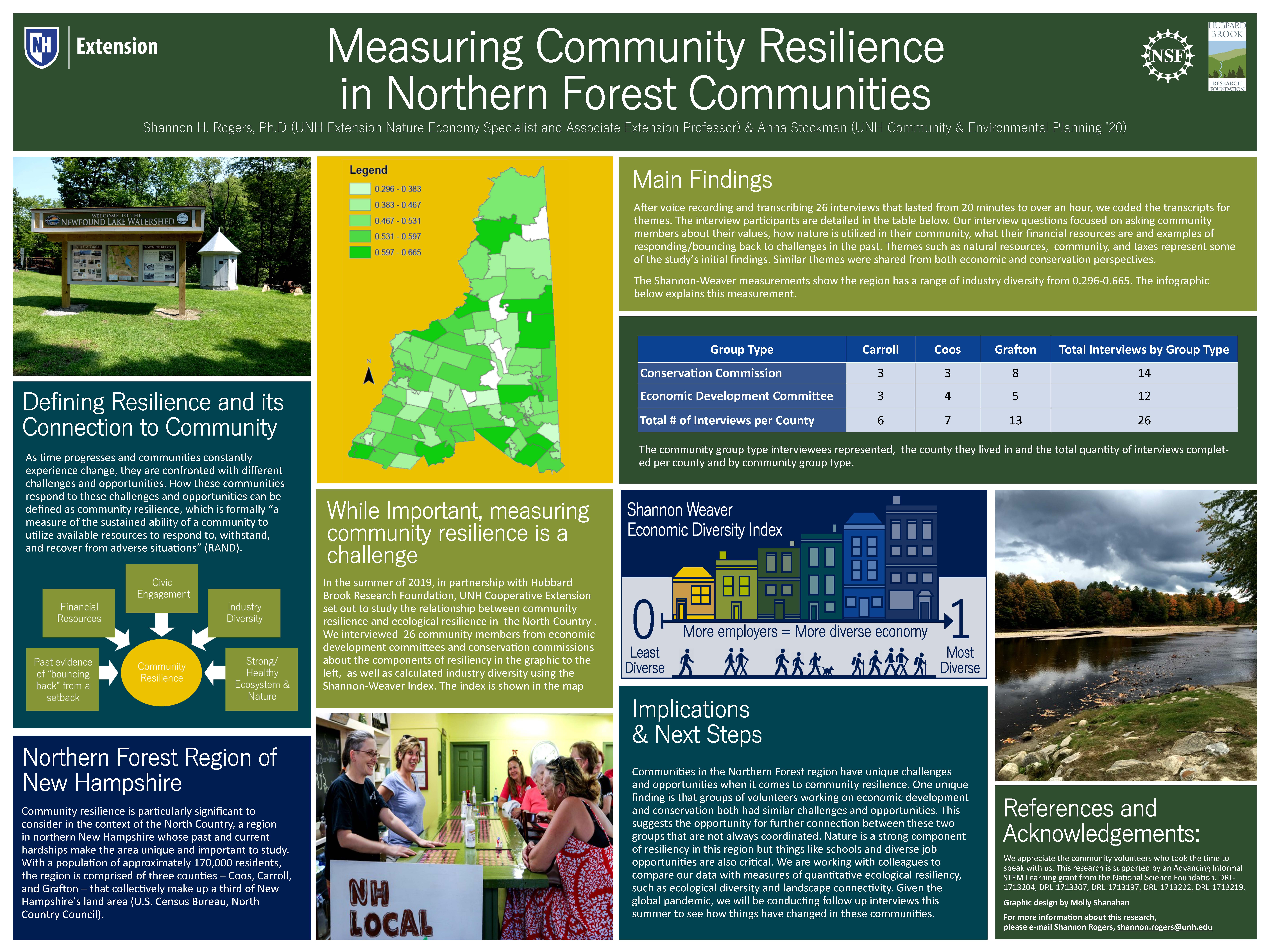
Click the poster to view Larger
Title: Measuring Community Resilience in Northern Forest Communities
Presenters: Shannon Rogers
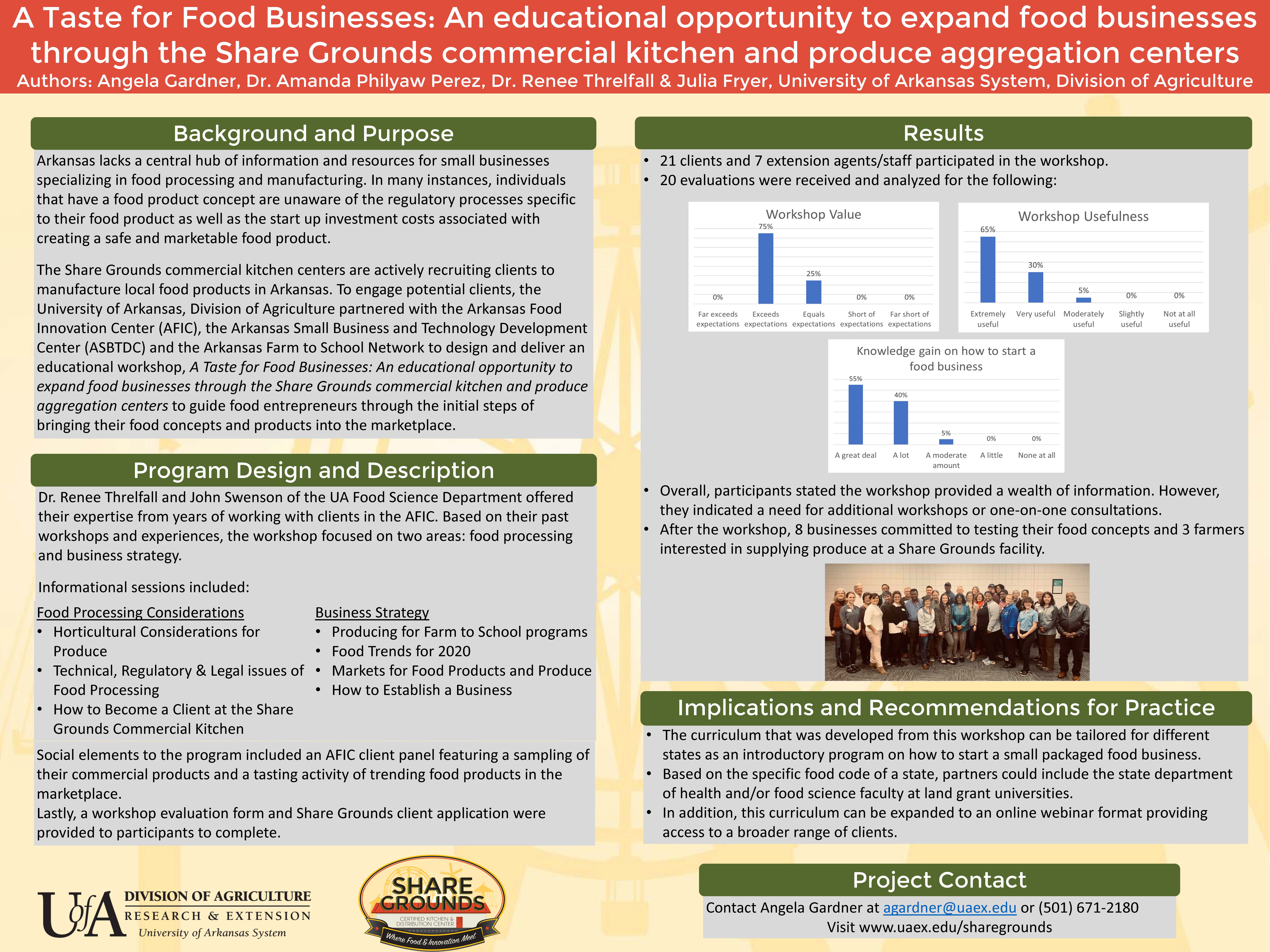
Click the poster to view larger
Title: A Taste for Food Businesses: An educational opportunity to expand food businesses through the Share Grounds commercial kitchen and produce aggregation centers
Presenter: Angela Gardner, Program Associate, University of Arkansas, Division of Agriculture-Cooperative Extension Service
Authors: Amanda Philyaw Perez, Renee Threlfall, Julia Fryer
Abstract: The Share Grounds commercial kitchen centers are actively recruiting clients to manufacture local food products in Arkansas. To engage potential clients, the University of Arkansas, Division of Agriculture hosted training to guide food entrepreneurs through the initial steps of bringing their food concepts and products into the marketplace.
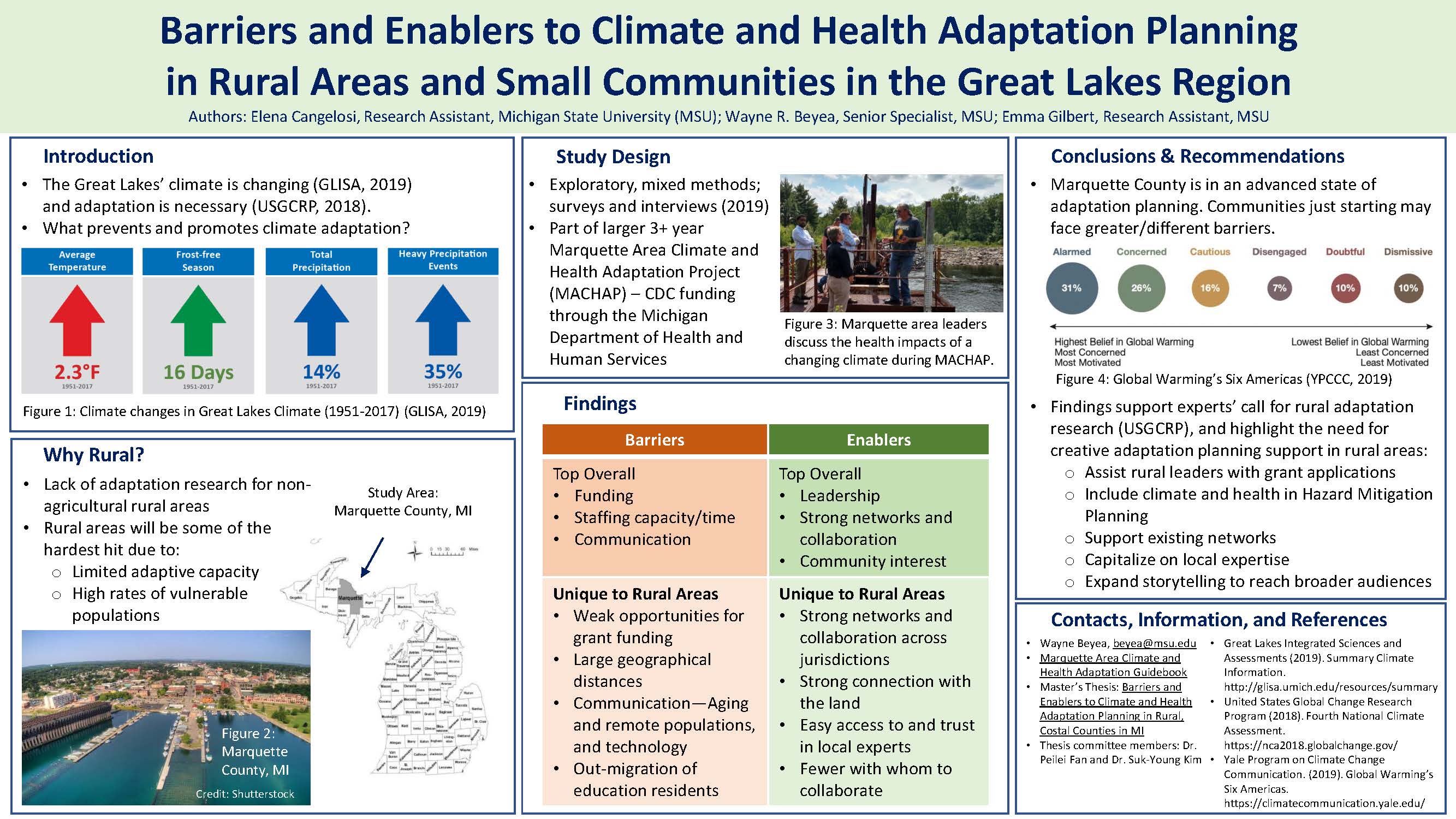
Click the poster to view larger
Submission ID: 2020-0444 Corresponding author: Wayne Beyea (beyea)
Title: Barriers and Enablers to Climate and Health Adaptation Planning in Small Urban Areas in the Great Lakes Region
Author(s): Elena Cangelosi, Research Assistant, Michigan State University (MSU), Wayne R. Beyea, Senior Specialist, MSU, Emma Gilbert, Research Assistant, MSU Type: Poster 50 Word
Abstract: This case study in Marquette County, Michigan explores the barriers and enablers to climate and health adaptation planning for rural counties and small communities in the Great Lakes Region. Highly contextual, understanding and addressing the unique factors at play for small-urban communities is key for effective adaptation in those areas.
|